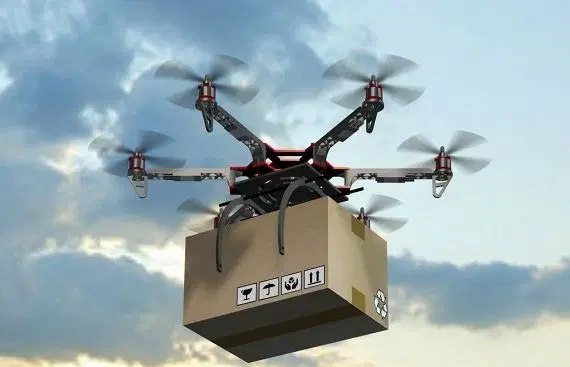India’s TSAW Drones has carried out an oncological tissue delivery under controlled temperature and humidity conditions between two hospitals for laboratory testing of the tissue sample.
The tissue sample was delivered while the surgery was ongoing and the results of the tests were used to make mid-surgery decisions.
By road, the distance between the two hospitals is 37 km. Poor road conditions and traffic mean road based deliveries take 60 minutes. In addition, the high vibration in transport sometimes damages the sample’s integrity.
A collaboration between the Manipal Academy of Higher Education (MAHE) and the Indian Council of Medical Research (ICMR) came up with the idea to conduct sample delivery using a drone. In this first case, the patient was being operated on at Dr. TMA Pai Rotary Hospital, Karkala, to check if the detected tissue is cancerous. The crucial test for the sample had to be carried out at the testing facility at Kasturba Hospital, Manipal. A small tissue sample was dissected and packed in thermal containers for transport then placed in the drone.
It took 16 minutes for the drone to reach the testing facility, after which the sample was given to the lab for testing. The results of the test from dissection to report generation took less than half an hour and the doctors operating on the patient continued the surgery with the information from the report.
The flight demonstrated the ability to enable faster decision-making during surgery where setting up a new testing facility in a remote location is a challenge in terms of monetary and infrastructure requirements. Together with Dr. TMA Pai Rotary Hospital, many other such peripheral hospitals are being connected to the tertiary testing facility.
While this case was a success, TSAW Drones has noted challenges which inhibit the pace of expanding a drone service network. Bad weather, designated no-fly zones, as well as compliance requirements with the governing bodies are all factors to be considered. In addition, drones entering the commercial airliner space must of course be compatible with existing aviation infrastructure to meet safety requirements. The company expects developments in drone service models over the coming decade that would met these challenges and enable drones to play a greater role in deliveries as well as passenger services.
For more information




